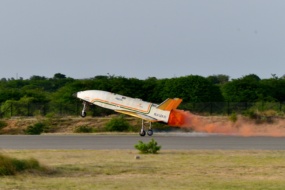SpaceX’s train to space is striking a regular cadence.
On Saturday, Transporter-9 took off, sending 113 payloads across 90 different spacecraft and 89 deployments to orbit from a Falcon 9. The launch was, as always, a major event for the space startup world, giving several new companies and a slew of old-timers a comparatively cheap, reliable ride to space. It was the 82nd Falcon 9 flight of the year and 12th reuse of this particular booster, which also launched Transporter-8 earlier this year.
So far, SpaceX reports that 86 of the 89 total deployments have been confirmed. The final three are still awaiting confirmation.
New kids in LEO
Transporter launches tend to give a few new companies their first foothold in orbit. Transporter-9 opened the doors to LEO for some new players.
On impulse: Impulse Space, the in-space transportation company founded by SpaceX OG Tom Mueller, sent its very first spacecraft to orbit aboard Mira, its orbital service vehicle. The LEO Express-1 mission has a laundry list of tasks to complete in orbit, including payload deployment and hosting, maneuvering in low altitude, and controlled atmospheric reentry.
Going rogue: Rogue Space, an in-orbit servicing startup based in New Hampshire, sent its first demonstration mission to space this weekend. The payload, Barry-1, was funded through the DoD’s Orbital Prime debris mitigation program and will test the company’s software design for aggregating and processing multiple sources of data on orbit in real time.
Eyes and sensors in space
Transporter launch days are always major events for companies working on remote sensing projects, and this weekend’s deployment was no exception.
Number one customer: Planet ($PL) took up by far the highest number of payload slots on this particular launch, with 36 of its SuperDoves heading to join the existing constellation in orbit. These satellites, each capable of collecting imagery across eight spectral bands, will continue to expand the company’s daily global revisit.
Planet also launched a tech demonstration called Pelican-1, which is testing new instruments that will be used on the company’s next-generation constellations, Pelican and Tanager.
Emissions tracking: Methane emissions monitoring company GHGSat is expanding into new territory. The company manifested its first CO2-monitoring satellite, Vanguard, on Transporter-9. It’s also not easing up on its methane-monitoring mission, also deploying two more methane-sensing satellites on the trip.
Eyes on environment: GHGSat’s new bird isn’t the only one focused on monitoring environmental data across the globe. Open Cosmos, a Barcelona startup, sent two satellites, MANTIS and PLATERO, to space. MANTIS combines imaging and AI to derive insights on the mining sector, while PLATERO will combine those capabilities with IoT connectivity to monitor things like biodiversity and wildfires.
Best of the rest
We couldn’t leave you without a quick shoutout for some of the other riders on this launch:
- OTVs, including D-Orbit’s Ultimate Hugo and Exotrail’s SpaceVan 001
- Communication sats, including Kepler’s AETHER 1 & 2 pathfinder missions and Jacobs’ Mango 2a and 2b satellites to demonstrate a new software-defined radio
- IoT missions, including payloads from OQ Technologies, Apogeo Space, SpaceIn, and hiSky




